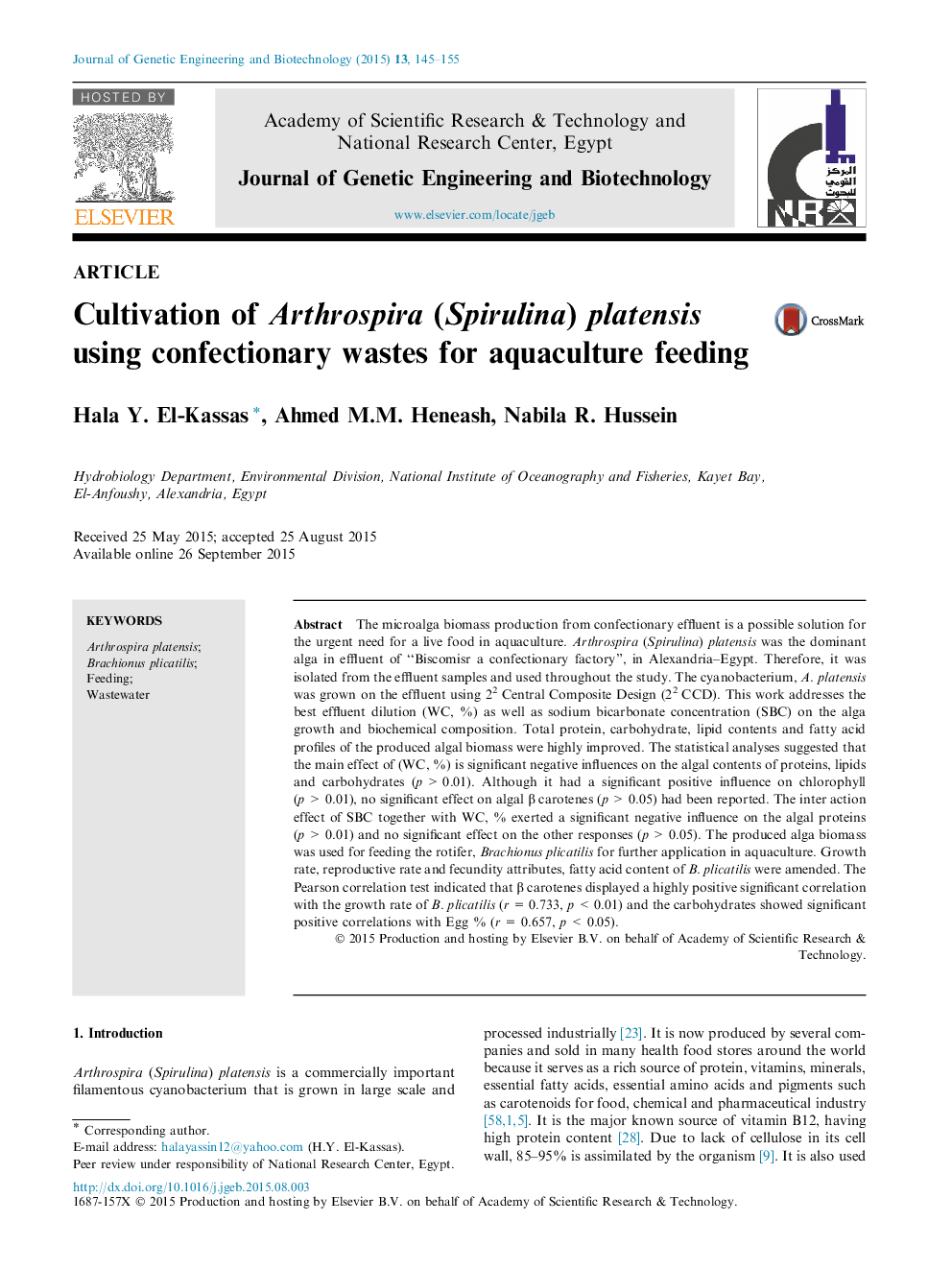| Article ID | Journal | Published Year | Pages | File Type |
|---|---|---|---|---|
| 2087863 | Journal of Genetic Engineering and Biotechnology | 2015 | 11 Pages |
The microalga biomass production from confectionary effluent is a possible solution for the urgent need for a live food in aquaculture. Arthrospira (Spirulina) platensis was the dominant alga in effluent of “Biscomisr a confectionary factory”, in Alexandria–Egypt. Therefore, it was isolated from the effluent samples and used throughout the study. The cyanobacterium, A. platensis was grown on the effluent using 22 Central Composite Design (22 CCD). This work addresses the best effluent dilution (WC, %) as well as sodium bicarbonate concentration (SBC) on the alga growth and biochemical composition. Total protein, carbohydrate, lipid contents and fatty acid profiles of the produced algal biomass were highly improved. The statistical analyses suggested that the main effect of (WC, %) is significant negative influences on the algal contents of proteins, lipids and carbohydrates (p > 0.01). Although it had a significant positive influence on chlorophyll (p > 0.01), no significant effect on algal β carotenes (p > 0.05) had been reported. The inter action effect of SBC together with WC, % exerted a significant negative influence on the algal proteins (p > 0.01) and no significant effect on the other responses (p > 0.05). The produced alga biomass was used for feeding the rotifer, Brachionus plicatilis for further application in aquaculture. Growth rate, reproductive rate and fecundity attributes, fatty acid content of B. plicatilis were amended. The Pearson correlation test indicated that β carotenes displayed a highly positive significant correlation with the growth rate of B. plicatilis (r = 0.733, p < 0.01) and the carbohydrates showed significant positive correlations with Egg % (r = 0.657, p < 0.05).
